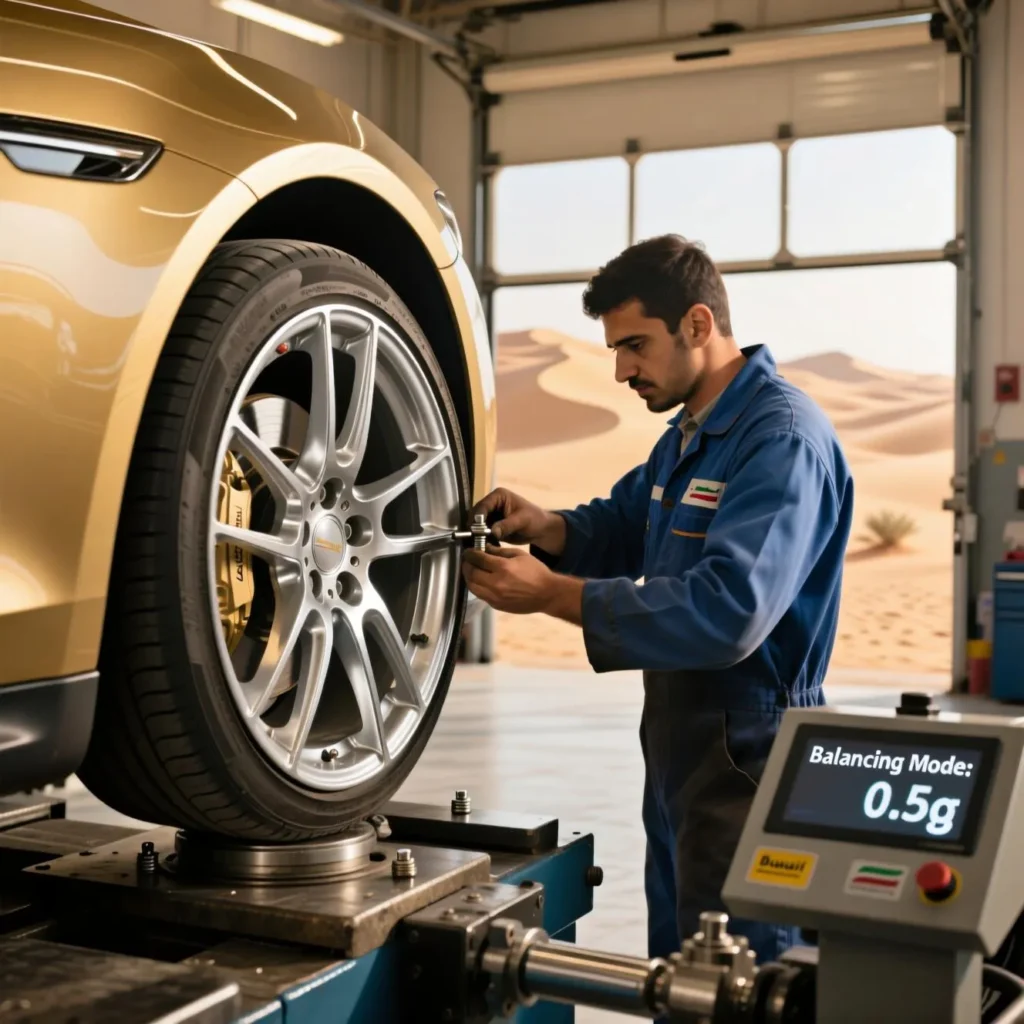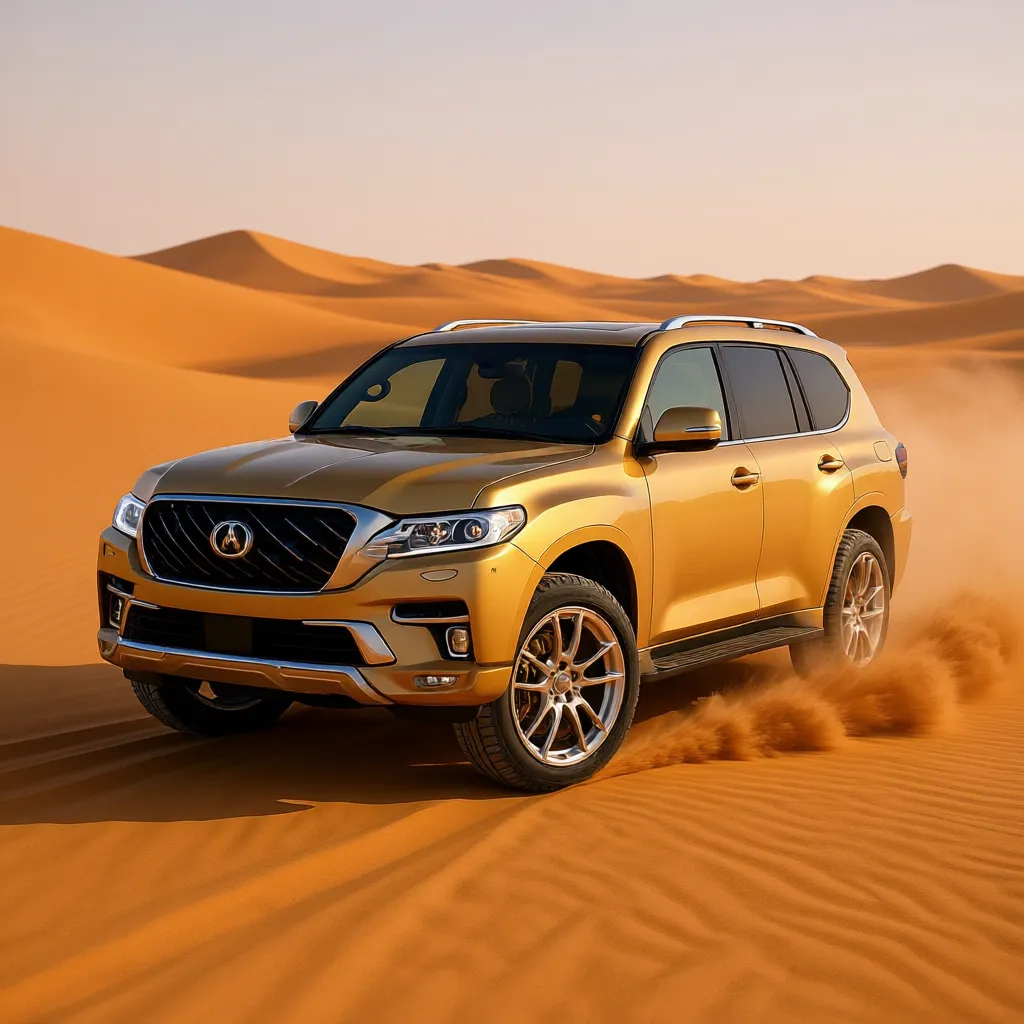Driving in Kuwait is a one-of-a-kind experience. From the modern highways of مدينة الكويت (Kuwait City) to adventurous trips across the الصحراء (desert), your vehicle’s safety and stability rely heavily on one essential factor: achieving perfect balance: professional wheel alignment and tire balancing.
Many drivers overlook how much these services impact comfort, fuel economy, and overall performance. This FormulaWheel guide explains why wheel alignment and balancing are vital, how they are carried out, and what sport sedan and SUV owners in Kuwait need to know.
Looking for expert wheel alignment and balancing in Kuwait?
At FormulaWheel, we help drivers across Kuwait choose the right جنط السيارة, ensure the best مقاس الجنط and اوفست الجنط, and maintain their مقاسات الكفرات for maximum performance.
Why Wheel Alignment and Balancing Matter in Kuwait
Kuwait’s extreme heat, long highways, and demanding driving conditions make proper tire maintenance essential. If your wheels are not aligned or balanced correctly, you risk:
- Uneven tire wear that shortens lifespan.
- Higher fuel consumption is caused by rolling resistance.
- Steering wheel vibration at faster speeds.
- Reduced control during sudden maneuvers.
- Extra pressure on suspension components.
For sport sedans like the Toyota Camry TRD, Honda Accord Sport, or Nissan Altima SR, as well as large SUVs built for desert driving, alignment and balancing are not optional extras—they are absolute necessities.
What Is Wheel Balancing (ترصيص الكفرات)
Balancing ensures that the weight of the tire and rim is evenly distributed. A tiny weight discrepancy is enough to send vibrations through your vehicle as your speed increases.
Signs Your Wheels Need Balancing:
- Steering wheel vibrations between 80–120 km/h.
- Uneven tread wear across tires.
- A noisy or rough ride, even with new tires.
Benefits of Proper Balancing:
- A smoother ride with reduced vibration.
- Longer tire life through even wear.
- Better fuel efficiency by reducing resistance.
- Safer driving, especially at highway speeds.
To ensure a smooth and safe drive on Kuwait’s roads, don’t forget a wheel balance with every new set of tires or roughly every 10,000 km.
How Wheel Balancing Is Done
Technicians use advanced machines to detect imbalances:
- The tire and جنط السيارة (rim) are mounted on the balancing machine.
- To diagnose weight distribution issues, the wheel is spun on a calibration machine that detects heavy and light spots.
- Small weights are attached to correct the imbalance.
- Counterweights are applied, and the process is repeated until perfect balance is achieved.
Balancing methods include:
- Static Balancing: Corrects minor vertical imbalances.
- Dynamic Balancing: Adjusts both vertical and side-to-side forces—crucial for performance sedans.
What Is Wheel Alignment (ضبط زوايا العجلات)
Alignment means adjusting wheel angles so they match factory specifications. This maximizes road contact and ensures stability.
Key Angles to Adjust:
- Camber: Camber refers to the vertical angle of a wheel, whether it tilts inward or outward. Wrong camber causes uneven tire wear.
- Caster: The steering axis angle, important for cornering and stability.
- Toe: Whether wheels point inward (toe-in) or outward (toe-out). An incorrect toe reduces handling and efficiency.
Signs Your Car Needs Alignment:
- The car pulls to one side.
- Uneven tread wear.
- Loose or unresponsive steering.
- A crooked steering wheel when driving straight.
The Importance of Alignment in Kuwait
Kuwait’s environment makes alignment checks critical:
- Hot Summers: Extreme heat increases wear, so correct alignment extends tire life.
- Highways: At fast speeds, poor alignment can cause drifting.
- Desert Roads: Off-road desert excursions are a leading cause of suspension stress and wheel misalignment.
- Sport sedans and SUVs should get alignment checked once a year—or sooner if they drive off-road regularly.
How Alignment Is Performed
Professional alignment workshops in Kuwait use computerized systems:
- The car is positioned on an alignment rack.
- Sensors are placed on each wheel.
- The system measures camber, caster, and toe.
- The technician adjusts suspension components.
- A final test confirms the steering wheel is straight and the vehicle drives smoothly.
Mistakes to Avoid
- Ignoring small vibrations at high speed.
- Delaying service, which leads to permanent tire damage.
- Using low-quality workshops with poorly calibrated machines.
- Installing oversized wheels (مقاس الجنط) or incorrect offset (اوفست الجنط) makes alignment difficult.
- Skipping tire rotation, which reduces the benefits of balancing.
Service Intervals in Kuwait
- Balancing: Every 10,000 km or when changing tires.
- Alignment: At least once every 12 months, or after hitting potholes, curbs, or driving off-road.
Driving style matters too—aggressive city driving and frequent desert trips require more frequent checks.
Benefits for Sport Sedans and SUVs
Sport Sedans (Camry TRD, Accord, Altima):
- Precise cornering.
- Improved fuel economy.
- Smooth, stable high-speed driving.
SUVs in Desert Conditions:
- Better off-road control.
- Reduced suspension strain.
- Longer tire life despite rough terrain.
Kuwait’s Driving Challenges
- Heat: Damages rubber and alloys; regular balancing reduces risk.
- Sandstorms: Dust can damage wheel hubs and suspension.
- High-Speed Roads: Even small imbalances create major problems.
- City Traffic: The constant stop-and-go and tight turns of city driving cause alignment to degrade faster.
Conclusion
No matter if you’re gliding along Kuwait City’s pristine highways, maneuvering through the congested rhythm of urban streets, or pushing into the desert for an off-road escapade, keeping your wheels properly aligned and balanced noticeably enhances your vehicle’s performance.
When wheels are serviced correctly, you benefit from a ride that is not only smoother and quieter, but also significantly safer at high speeds. Proper alignment improves steering response, prevents unnecessary strain on suspension parts, and reduces fuel consumption by minimizing rolling resistance. Similarly, regular ترصيص الكفرات (wheel balancing) ensures that vibrations are eliminated, extending tire life and protecting the integrity of your جنط السيارة (rims).
For owners of sport sedans like the Camry TRD, Accord, or Altima, as well as SUV drivers who rely on their vehicles for both city travel and off-road رحلات الصحراء (desert trips), understanding the importance of ضبط زوايا العجلات (wheel alignment) and balancing is essential. These services are not luxuries but long-term investments that keep your vehicle running at its peak throughout the year, no matter the challenges of Kuwait’s climate and roads.
By making alignment and balancing a regular part of your car maintenance routine, you guarantee more than just comfort—you ensure safety, extend the lifespan of your tires, and enjoy the certainty that your vehicle remains always primed for the journey before you.
Drive safer, smoother, and more confidently with FormulaWheel.
FAQ – Wheel Alignment and Balancing in Kuwait
How do I know if my wheels need balancing?
Look for steering vibrations, uneven tread wear, or noisy rides.
How often should I check alignment?
Make it a yearly priority, or trust your instincts—if the steering feels uneven, it’s time for a check.
Does desert driving affect alignment?
Yes, off-road conditions are a common cause of wheel misalignment.
Do lightweight wheels (افضل جنوط) require balancing?
Yes, even lightweight alloys need precise balancing for stability.
Where can I get alignment and balancing in Kuwait?
FormulaWheel works with trusted service centers across Kuwait for both sedans and SUVs.



